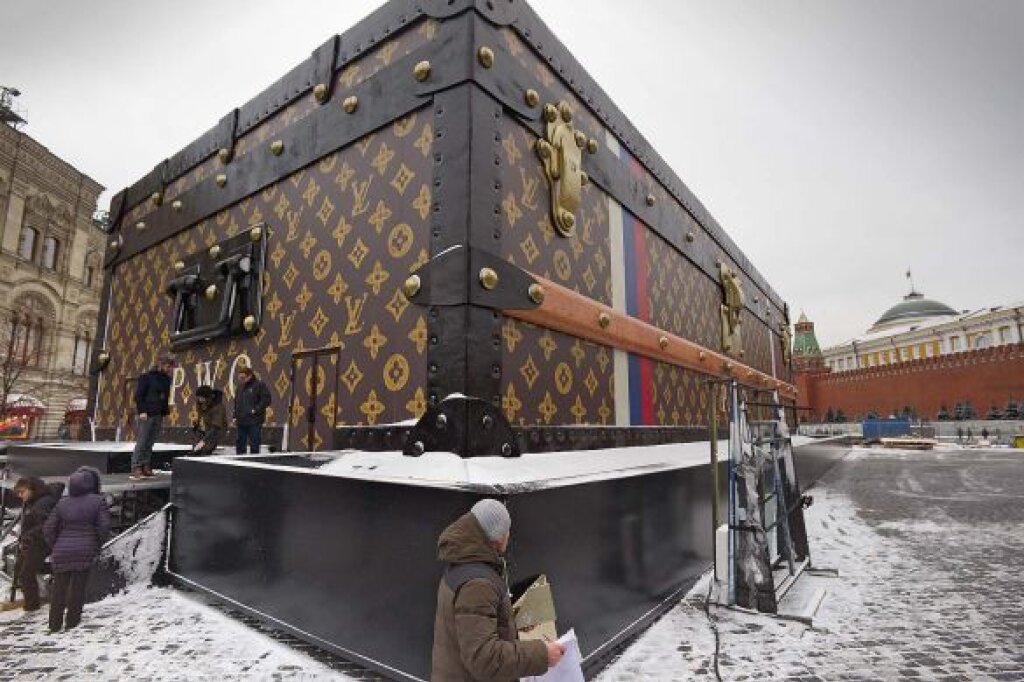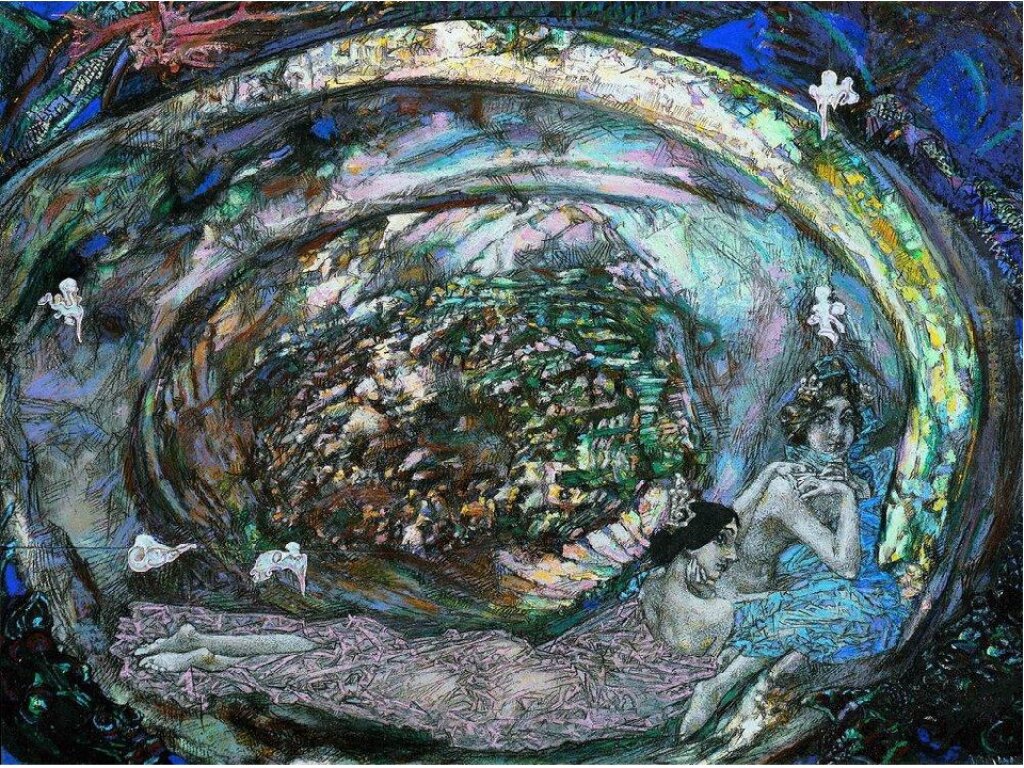Testicles, titanic trunks, tourists, and pickled corpses. I offer these words up as the answer in a Russia-themed round of Jeopardy. The question is, of course, "What can be found on Red Square?"
Setting aside the political significance of each example for a moment, the relative proximity of Pyotr Pavlensky's remarkable act of artistic and political self-mutilation (brilliantly analyzed in an earlier post by Anastasia Kayiatos) in the middle of Red Square and the construction of a giant Louis Vuitton trunk in roughly the same spot suggests that Russia is returning to its comfortable home in "News of the Weird." Throw in President Putin's bizarre meeting with both contemporary Russian writers and descendants of the classics and we have the spectacle of a political/public culture that has never met a straw it wasn't ready to clutch at with quiet desperation.
More to the point, we are confronted with a crisis in Russia's symbolic geography. Red Square, and, by extension, the Kremlin, have long stood at the center of Russia's iconography, both in its own self-presentation and in its construction in the West. In 1918, they also returned to their age-old role as the physical embodiment of centralized state power. This is a heady combination, and one that was by no means inevitable. France, for instance, is easily represented by the Eiffel Tower, or perhaps the Louvre, neither of which could be mistaken for the center of government. The US approach to such symbols is appropriately federalist: the White House stands for state power, but as a national symbol it is rivaled, if not eclipsed, by the Statue of Liberty, the Empire State Building, and the former Twin Towers, just to name a few.
The Soviet leadership made Red Square the staging ground for ideological public culture, with demonstrations, military parades, and state funerals all passing the reviewing stand on the top of Lenin's Tomb, that is, almost literally over his dead body.
And Pyotr Pavlensky chose Red Square as the venue for nailing his scrotum to a cobblestone. Certainly, Red Square is an obvious choice for attracting any kind of publicity, but there is more at work here. As Kayiatos points out, Pavlensky was reenacting a Soviet prison camp rite of total defiance and abjection: that is, he was erasing the imaginary boundary between the penal colony and public forum, between gulag and state.
Moreover, he also reminds us of the punitive roots of the culture's most prominent symbols. Red Square also contains the infamous "Lobnoe mesto," an execution block turned tourist attraction (and, not coincidentally, the site of one of Pussy Riot's public performances). His act was not so much a desecration as a re-desecration, a living reminder of the repressive basis of state power.
And Louis Vuitton? Here the scandal is that it never seemed to occur to anyone that a giant French trunk overshadowing Lenin's mausoleum might spark public outrage. The gross mismanagement of Russia's primary iconography suggests a lost capacity for distinguishing between the state and commercial capitalism. Is this enormous trunk the intended home for an equally gigantic symbolic body, dwarfing poor Vladimir Ilich in his now-humble abode? Pavlensky's testicular stunt highlights the vulnerability of the individual human when surrounded by state power; the enormous Vuitton trunk is a case of capitalist elephantiasis. All of this takes balls, but only Pavlenksy was willing to put his on the line.
Inevitably, this brings me back to Pussy Riot. Pussy Riot's crime was its supposed violation of the Cathedral of Christ the Savior as a sacred site. Nearly two years later, their action appears to be only the opening salvo in a battle for the soul of Russian public space. This battle is never evenly matched; in the face of the combined mismanagement of state symbols and state power, what else do individuals have in their arsenal besides actions that fall under the catch-all category of "hooliganism"?



